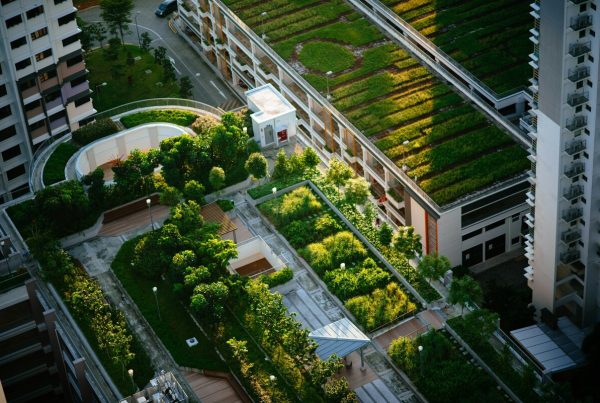The Northern California chapter of USGBC (USGBC-NCC) recently came out with the Building Health Initiative, meant to bring the focus back to LEED health benefits.
Partnering with USGB-NCC in this new endeavour are more than 20 companies and organizations, a wide mix of both key players and startups in various industries: tech giants Adobe, Google, Genentech, architectural and design firm Arup and Perkins + Will, building materials company Webcor Builders, , healthcare provider Kaiser Permanente, among many others. The City of Francisco and the University of California are also backing the initiative.
As their commitment to the green building movement, these companies have pledged to enact various actions within their organization.
- Designing and manufacturing building materials with zero toxins
- Developing stricter standards of product safety such as the Health Product Declarations (HPDs)
- Ensuring a more transparent procurement system for building materials and office furniture
- Engaging everyone in the conversation regarding green building and LEED health benefits.
While we’ve always known that LEED greatly impacts the health of a building’s occupants, all too-often we can get obsessed with the various metrics of a building’s performance instead. That’s perfectly reasonable for LEED contractors whose job it is to weigh and enact the necessary measures to secure the deserved LEED status for a building. Owners, too, would be understandably concerned about money matters such as improved energy savings, higher lease-up prices, lower maintenance costs and vacancy rates, tax incentives, and many others.
That’s all well and good. After all, when those LEED buildings reap their expected profits, owners can invest in other LEED projects, and the whole cycle of green building is perpetuated.
But we shouldn’t lose sight of the two main reasons LEED exists in the first place: 1. reducing a building’s impact on the environment and 2. and providing long-term health benefits for the building’s occupants. All else is just icing on the cake, so to speak.
As SmartPlanet reports, healthy buildings may just be the next big thing, as they prevent diseases before they can even start. Studies have already shown that air pollution can be even worse inside our homes and workplaces than it is outdoors. And sick building syndrome is a real phenomenon, affecting employees’ performance and productivity. Considering we spend a big chunk of our time indoors—whether in our homes or offices—we should all pay attention to how our built environment affects our health.
LEED health benefits should definitely be the crucial platform from which we design our green buildings from now on. The old adage “Health is wealth” might be cliché, but in this case it still holds true for all of us.












